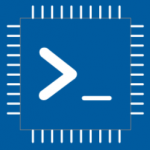Advertisement
Not a member of Pastebin yet?
Sign Up,
it unlocks many cool features!
- #include <ArduinoMPC.h>
- // Define system parameters
- const int numInputs = 2; // Number of control inputs (e.g., torques for each joint)
- const int numOutputs = 2; // Number of system outputs (e.g., joint angles)
- const int horizon = 10; // Prediction horizon
- // MPC object
- MPC mpc(numInputs, numOutputs, horizon);
- // Define system model matrices (A, B, C, etc.)
- // These matrices need to be tailored to your specific robotic arm model
- float A[2] = {1.0, 0.0}; // State transition matrix (simplified)
- float B[2] = {0.1, 0.1}; // Control input matrix (simplified)
- float C[2] = {1.0, 1.0}; // Output matrix (simplified)
- float Q[2] = {1.0, 1.0}; // State cost matrix
- float R[2] = {0.1, 0.1}; // Control cost matrix
- void setup() {
- Serial.begin(115200);
- // Initialize MPC with model parameters
- mpc.setModelMatrices(A, B, C);
- mpc.setCostMatrices(Q, R);
- // Set constraints for joint movements (example constraints)
- mpc.setInputConstraints(-10, 10); // Example input constraints for joint torques
- }
- void loop() {
- // Read current system state (e.g., joint angles)
- float currentState[numOutputs] = {readJointAngle(0), readJointAngle(1)};
- // Define desired setpoint (target joint angles)
- float setpoint[numOutputs] = {1.0, 1.0}; // Example setpoints in radians
- // Compute optimal control inputs
- float optimalInputs[numInputs];
- mpc.computeOptimalInputs(currentState, setpoint, optimalInputs);
- // Apply control inputs to actuators (e.g., motors controlling the joints)
- applyControlInputs(optimalInputs);
- // Print the results
- Serial.print("Optimal Inputs: ");
- for (int i = 0; i < numInputs; i++) {
- Serial.print(optimalInputs[i]);
- Serial.print(" ");
- }
- Serial.println();
- delay(100); // Loop delay
- }
- float readJointAngle(int joint) {
- // Implement function to read joint angles from sensors
- // For example, use an analog sensor or an encoder
- return analogRead(joint); // Placeholder, replace with actual sensor reading
- }
- void applyControlInputs(float* inputs) {
- // Implement function to send control inputs to motors
- // For example, use PWM to control motor torques
- analogWrite(LED_BUILTIN, inputs[0]); // Example: use control input for joint 1
- analogWrite(LED_BUILTIN + 1, inputs[1]); // Example: use control input for joint 2
- }
Advertisement
Add Comment
Please, Sign In to add comment
Advertisement

